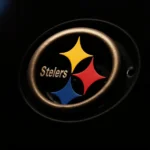Titanium, renowned for its exceptional strength-to-weight ratio and corrosion resistance, finds widespread applications across various industries. But did you know that this remarkable metal also possesses a captivating color palette? In this comprehensive guide, we’ll delve into the world of titanium colors, exploring its natural hues, the factors influencing its appearance, and its diverse applications in design and beyond.
The Natural Hues of Titanium: Beyond the Metallic Sheen
While often associated with a silvery-white metallic shine, titanium can exhibit a spectrum of colors depending on various factors. In its purest form, titanium boasts a brilliant silver-white hue. However, the presence of impurities, surface treatments, and the formation of oxide layers can dramatically alter its appearance, giving rise to a mesmerizing array of colors.
Titanium Color Chart: A Kaleidoscope of Possibilities
The color of titanium can be manipulated through a process called anodization. By immersing titanium in an electrolytic solution and applying an electrical current, a controlled oxide layer forms on its surface. This oxide layer, depending on its thickness and the specific parameters of the anodization process, selectively absorbs and reflects different wavelengths of light, resulting in a vibrant spectrum of colors.
Titanium Anodization Color Chart
| Voltage (Volts) | Color |
|---|---|
| 10-20 | Yellow to Gold |
| 25-40 | Brown to Purple |
| 40-50 | Blue to Light Blue |
| 50-70 | Dark Blue to Green |
| 70-90 | Green to Yellow |
| 90-110 | Yellow to Orange |
| 110-120 | Orange to Red |
Note: The actual colors may vary slightly depending on the specific anodization process and alloy composition.
Factors Influencing Titanium Color:
Several factors can influence the color of titanium, including:
- Alloy Composition: The presence of other elements in titanium alloys can significantly impact its color. For instance, the addition of vanadium can create a range of blue and purple hues.
- Surface Finish: The texture and roughness of the titanium surface can affect how light interacts with it, influencing its perceived color.
- Heat Treatment: Subjecting titanium to high temperatures can alter its microstructure and create colorful oxide layers.
- Coatings: Applying paints, dyes, or other coatings can obviously change the color of titanium.
Applications of Titanium Colors
The ability to manipulate the color of titanium has opened up exciting possibilities in various fields:
-
Jewelry: Titanium’s lightweight, hypoallergenic, and durable nature makes it an ideal material for jewelry. Its vibrant colors and the ability to create unique patterns through anodization have made it increasingly popular for rings, earrings, and bracelets.
-
Architecture: Titanium’s corrosion resistance and stunning aesthetics have made it a sought-after material in modern architecture. From colorful facades to intricate roof structures, titanium adds a touch of elegance and modernity to buildings.
-
Medical Implants: Titanium’s biocompatibility and the ability to create a porous oxide layer through anodization make it an excellent material for medical implants. The colored oxide layer can also promote osseointegration, the process of bone fusing to the implant.
Titanium Color FAQs: Addressing Common Queries
Here are answers to some frequently asked questions about titanium color:
1. What is the most common color of titanium?
In its natural state, titanium exhibits a silvery-white metallic color. However, through anodization, a wide spectrum of colors can be achieved, with blue, purple, and gold being popular choices.
2. Can titanium change color over time?
Titanium is highly resistant to corrosion and tarnishing. The color of anodized titanium is also highly durable and unlikely to fade significantly over time, especially when properly cared for. However, certain harsh chemicals or extreme conditions might potentially affect the color over extended periods.
3. Is it possible to create custom colors on titanium?
Yes, skilled artisans and manufacturers can create custom colors on titanium through precise control of the anodization process. By adjusting factors such as voltage, current density, and bath composition, specific colors or color gradients can be achieved.
 Anodized titanium plates used in building facades
Anodized titanium plates used in building facades
Conclusion: Embracing the Spectrum of Titanium Colors
Titanium, far from being limited to a single hue, offers a captivating palette of colors, enhancing its versatility and appeal across diverse applications. Whether adorning jewelry, gracing architectural marvels, or playing a crucial role in medical implants, titanium’s vibrant hues continue to captivate and inspire.
If you’re seeking to incorporate the unique beauty and durability of titanium into your next project, Color Box Hà Nội is here to guide you. Our team of color experts can help you navigate the world of titanium colors, providing expert advice and customized solutions tailored to your specific needs.
Need help with your next project? Contact us!
Phone Number: 0373298888
Email: [email protected]
Address: 86 Cầu Giấy, Hà Nội.
We are available 24/7 to assist you.

